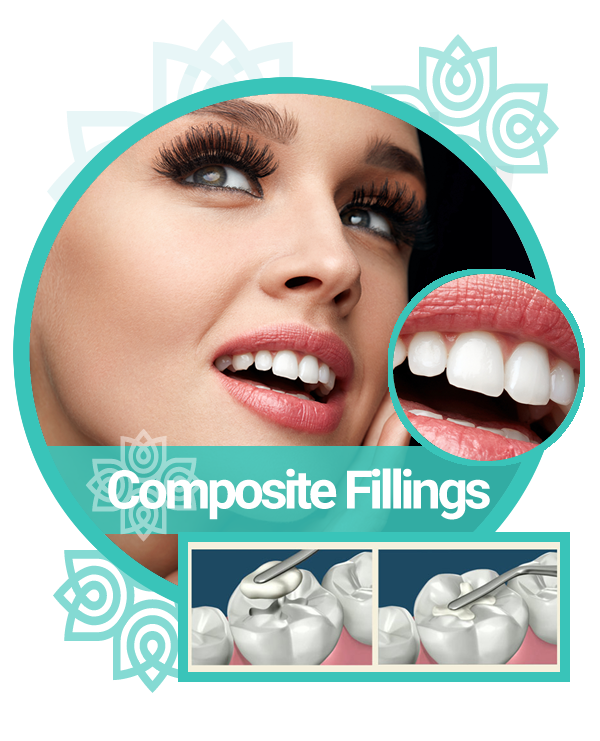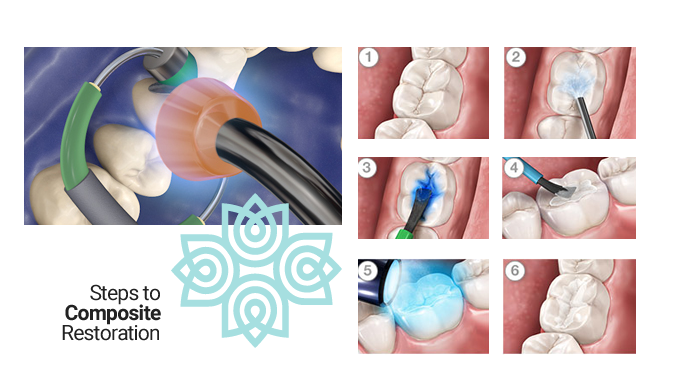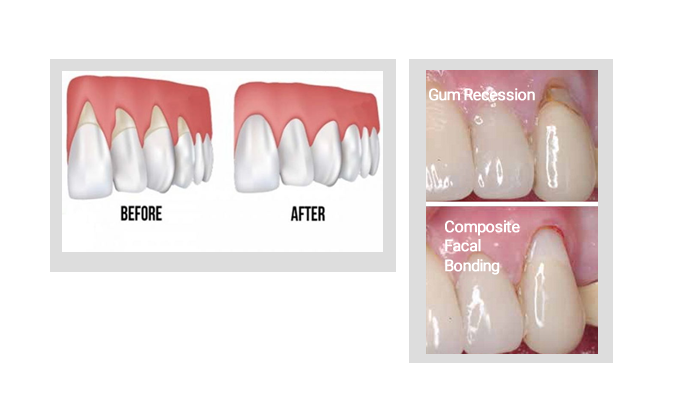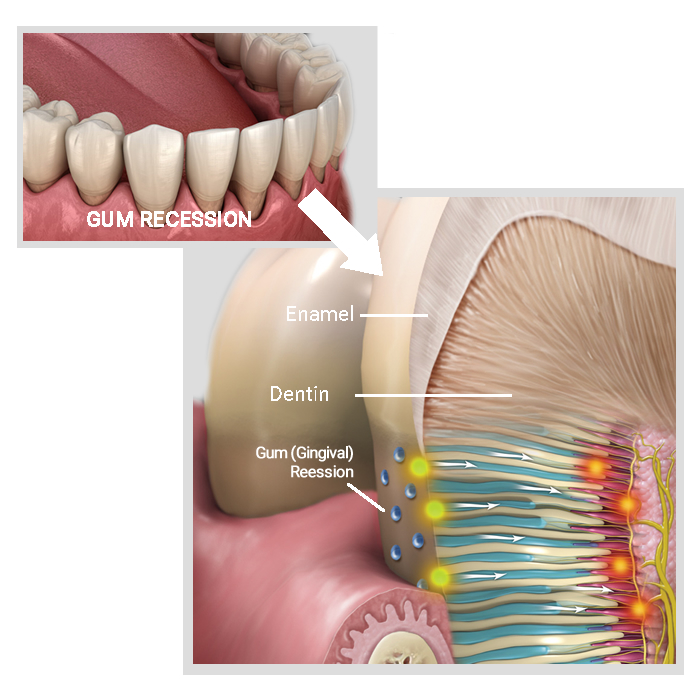
COMPOSITE FILLINGS (BONDINGS)
TODAY, MORE PATIENTS ASK THEIR DENTISTS ABOUT WHITE FILLINGS BECAUSE THEY WANT THEIR TEETH TO LOOK NATURAL WHEN THEY LAUGH, TALK AND SMILE.
White or composite fillings, also known as tooth-colored fillings, offer several advantages over traditional amalgam (silver) fillings. Here are some of the key advantages:
| Aesthetics Appeal | Reduced Sensitivity |
|---|---|
| Bonding Strengths | Mercury-Free |
| Conservative Restoration | Minimal Tooth Discoloration |
| Versatility |
COMPOSITE FILLINGS: HOW ARE THEY DONE?
| The procedure for a composite filling may take a little longer than those for other types of fillings, because after the decay is removed, the tooth must be kept totally isolated from saliva. | |
|---|---|
| We carefully apply an adhesive followed by several thin layers of the tooth-colored composite. | |
| Once the filling is in place, it is chemically hardened, or cured, for less than a minute with a special light. | |
| Some may experience some sensitivity to hot/cold in the newly filled tooth for a few days or as long as a week. If the sensitivity continues beyond that time, contact your us for further evaluation. |
WHAT IS FACIAL BONDING?
Dental bonding, also known as cosmetic bonding, is a dental procedure used to improve the appearance of teeth by applying a tooth-colored composite resin material to the teeth. It’s a non-invasive and relatively affordable cosmetic dentistry option. The procedure involves the dentist roughening the surface of the tooth, applying a bonding agent, and then layering and sculpting the composite resin to achieve the desired shape. Once the material is in place, it is hardened using a special light. The dentist then shapes and polishes the bonded material to match the natural teeth.
Dental bonding can be used for various purposes, including:
Bonding can effectively restore the appearance of teeth that have small chips or cracks.
It can be used to close minor gaps or spaces between teeth.
Teeth that are stained or discolored and don’t respond well to traditional teeth whitening methods can be improved with dental bonding.
Dental bonding can reshape teeth that are misshapen, giving them a more uniform and aesthetically pleasing appearance.
If a tooth’s roots become exposed due to gum recession, bonding can cover and protect the roots.
While not a substitute for orthodontic treatment, dental bonding can be used to make minor adjustments to the appearance of slightly misaligned teeth.
GUM RECESSION (GINGIVAL RECESSION), CAUSES AND REMEDIES
Gum recession, also known as gingival recession, is a condition where the gum tissue that surrounds and supports the teeth starts to pull away from the tooth, exposing more of the tooth’s surface or even its root. This can lead to increased tooth sensitivity, aesthetic concerns, and potentially more severe dental issues if left untreated.
Gum recession can be caused by various factors, including:
The most common cause of gum recession is gum disease (periodontal disease) caused by bacterial infection and inflammation of the gum tissues.
Brushing teeth too hard or using a toothbrush with bristles that are too stiff can contribute to gum recession over time.
Some people may have a genetic predisposition to gum recession.
Teeth that are not properly aligned can put uneven pressure on the gums, leading to recession in some areas.
Inadequate oral hygiene practices can contribute to gum disease and recession.
Smoking or using other tobacco products can increase the risk of gum recession.















